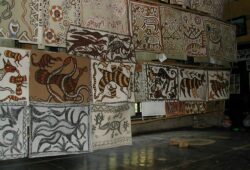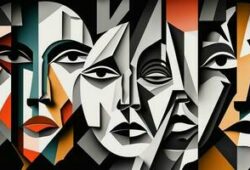The Provocative Brilliance of Philip Guston’s Paintings
 Posted On
Posted On
Philip Guston, an iconic figure in the realm of modern art, wielded his brush with a unique blend of introspection and raw honesty that challenged the norms of his time. Born in 1913, Guston’s journey as an artist spanned various artistic phases, but it was his later works that brought him both acclaim and controversy.
Initially associated with the Abstract Expressionist movement alongside Jackson Pollock and Willem de Kooning, Guston transitioned away from pure abstraction in the late 1960s. This shift marked a pivotal moment in his career, as he embraced figurative painting, a decision that sparked intense reactions within the art world.
Guston’s exploration of the human condition through his unique visual language is notably encapsulated in his series of hooded figures. These enigmatic characters, rendered in a cartoonish yet haunting style, became emblematic of his late period. The hooded figures, reminiscent of Ku Klux Klan members, were Guston’s way of confronting societal issues, particularly racism and the darkness lurking within humanity.
His bold choice to confront such sensitive subjects through art triggered a polarizing response. Some viewed his work as a powerful commentary on the political and social turmoil of his era, while others found it disturbing and controversial.
What made Guston’s paintings striking was not just the subjects he chose, but also his daring use of colour and form. His compositions often juxtaposed vibrant hues with sombre undertones, creating an unsettling yet captivating atmosphere. The thick, expressive brushstrokes added depth and intensity to his pieces, inviting viewers into a world filled with both turmoil and introspection.
Moreover, Guston’s ability to infuse a sense of dark humour into his paintings was unparalleled. Despite the weighty themes he tackled, there was an element of absurdity and irony present in his art. This duality allowed viewers to contemplate the profound messages while grappling with the whimsical and often perplexing nature of his imagery.
Guston’s legacy extends beyond the canvas. His courage to break away from established artistic conventions and delve into uncomfortable subject matter served as an inspiration for generations of artists. His willingness to challenge the status quo and push the boundaries of art continues to resonate, emphasizing the importance of artistic freedom and expression.
In 1980, Guston passed away, leaving behind a body of work that remains a testament to his artistic genius and uncompromising vision. Despite the controversies surrounding his later paintings, they stand as a testament to the power of art to provoke thought, evoke emotion, and confront the complexities of the human experience.
Philip Guston’s paintings endure as a reminder that art is not merely about aesthetics but also a powerful medium for introspection, social commentary, and pushing the boundaries of societal discourse. His legacy continues to provoke conversations, challenging us to confront uncomfortable truths while marvelling at the brilliance of his artistic prowess.



